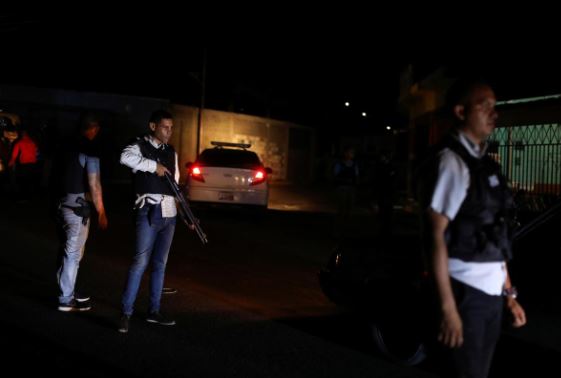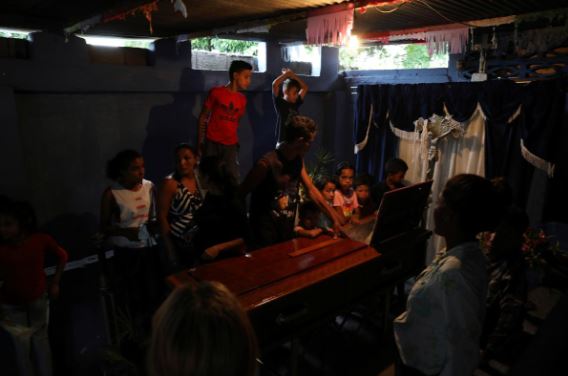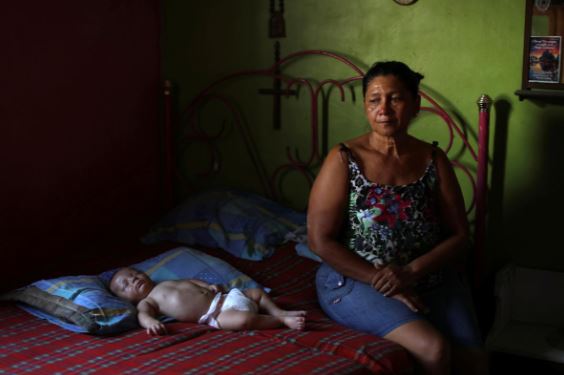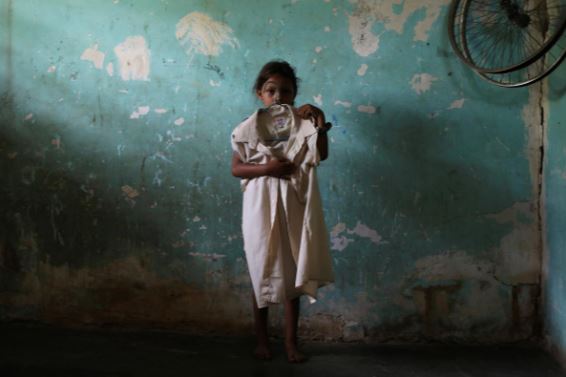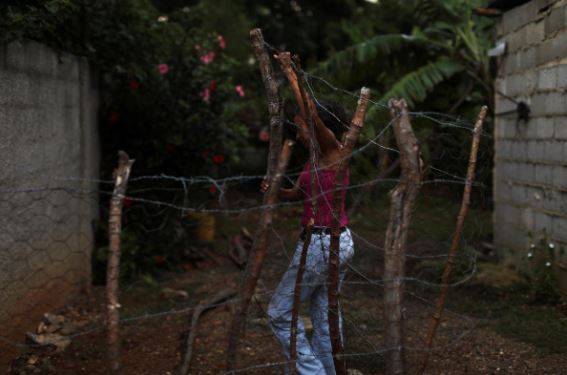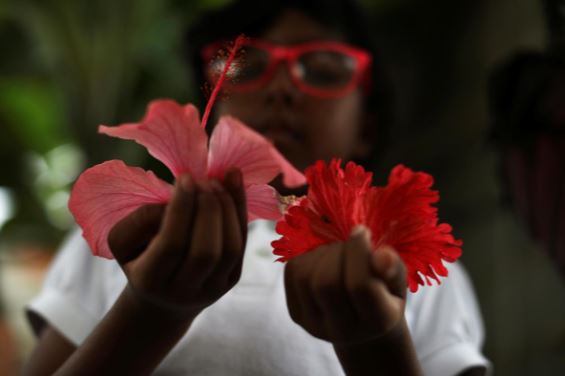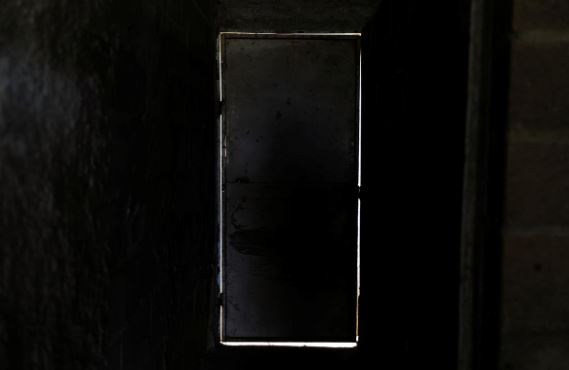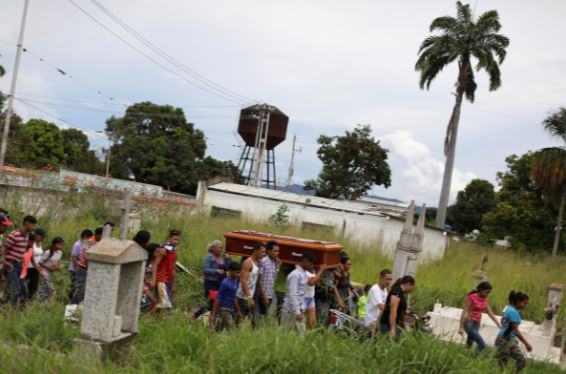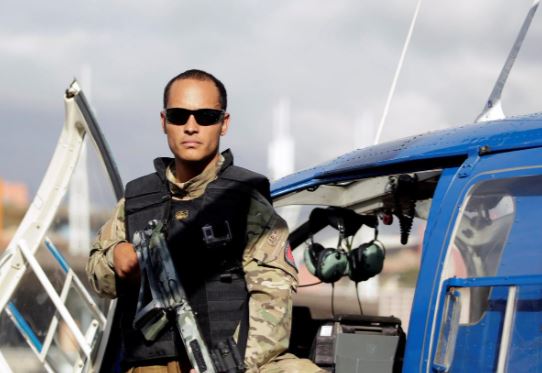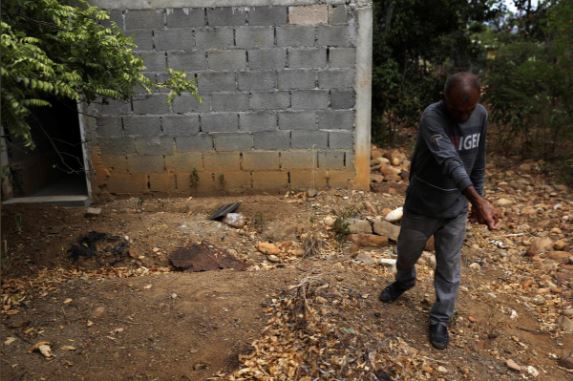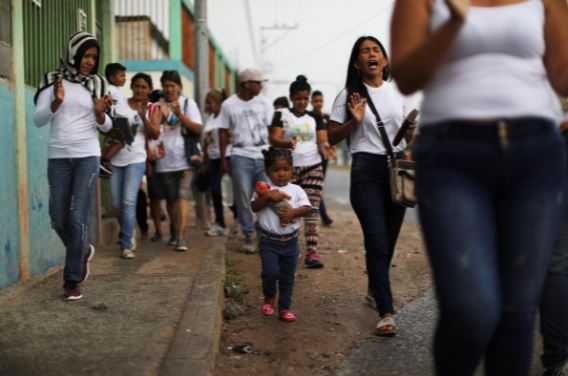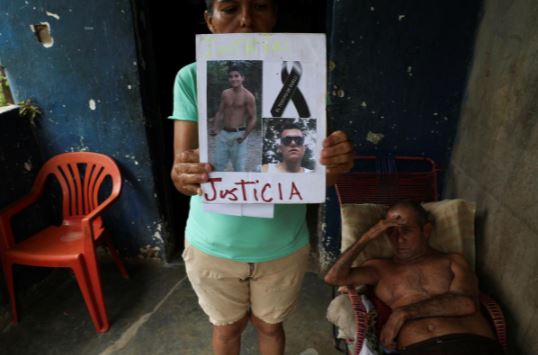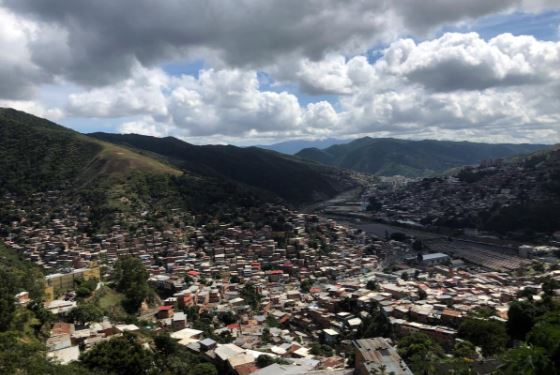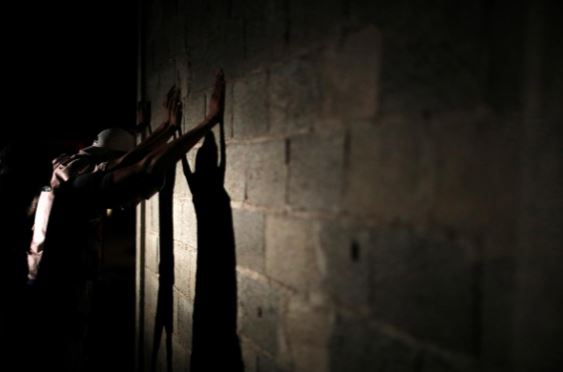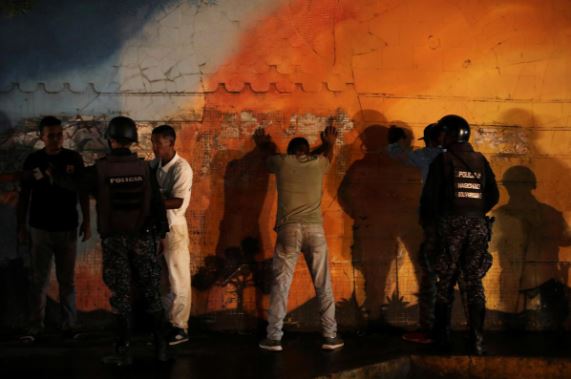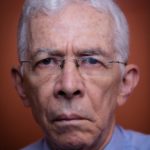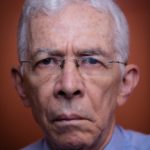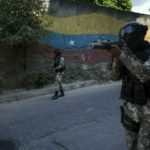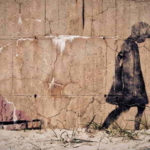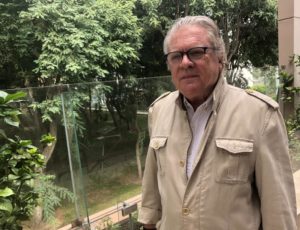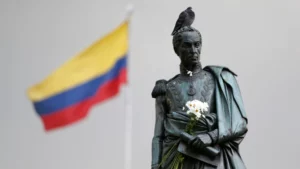Publicado en: Reuters
Por: Angus Berwick y Sarah Kinosian
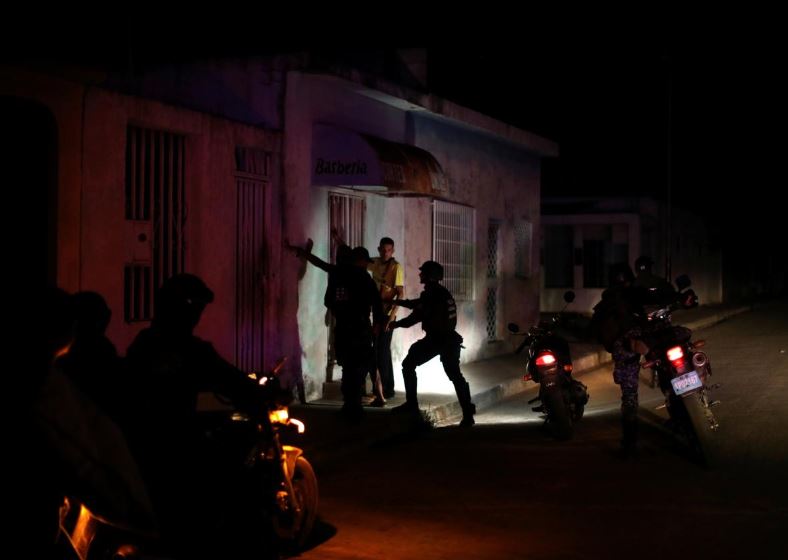
Before daybreak on January 8, several dozen police officers swept through the streets of Barrio Kennedy, a hillside slum outside Venezuela’s capital.
Some of the officers came under fire from assailants, unprompted. They shot back, hitting five young men. The five were then taken to a hospital, where they died of their wounds.
That, at least, is the official account, detailed in a statement the next day by the elite unit that conducted the operation – the Special Action Force of the Venezuelan National Police.
The force’s version of events is contradicted by five eyewitness accounts gathered by Reuters. These people say the police killed one of the victims not in a street shootout, but in his home. The official story is also contradicted by video of that victim, reviewed by Reuters and reported here for the first time, that was obtained by investigators at Venezuela’s opposition-controlled National Assembly.
The 82-second clip shows the young man sitting shirtless and unarmed in a storage room inside his home, under police interrogation about a nearby car theft, begging officers to spare his life.
“Brother,” says Jose Arevalo, a 29-year-old shop worker who had been convicted of robbery earlier this decade but avoided legal trouble since. “Don’t kill me.”
“If you collaborate, you’ll go free,” responds an unidentified officer, wearing black fatigues and a balaclava. “Otherwise, you’re going to die.”
The footage was recorded in the final minutes of Arevalo’s life, his girlfriend told Reuters. The couple was at home with her two children, she said, when about 15 uniformed officers and an unidentified person in civilian clothes barged in. They ejected her and the kids from the house.
Speaking on condition of anonymity, the girlfriend said she believes the video was shot by one of those people, all unknown to her, once she was outside.
From the street, she said, she heard the sound of Arevalo being beaten. A few minutes later, she heard gunshots. Next, she saw officers carry Arevalo out of the house, apparently dead and now fully dressed. The police then riddled the walls of the house with bullets, making it appear that a gunfight had taken place. Just before leaving, she said, they stole a carton of eggs and her kids’ bicycle.
“If my son had committed a crime, they should have charged him and taken him to court,” said Zuleica Perez, Arevalo’s mother, who later identified his body at the morgue. “Instead, they decided to execute him.”
The girlfriend’s account was corroborated by four other eyewitnesses who were near the scene. It is one of 20 cases Reuters has documented across Venezuela in which witnesses have described extrajudicial killings by the Special Action Force, or FAES, as the unit is known by its Spanish acronym.
Jose Dominguez, the chief commissioner of the FAES, declined to discuss Arevalo’s death or the other cases recounted in this story. Neither the Interior Ministry nor the Information Ministry responded to requests for comment on detailed descriptions of this article’s findings.
The FAES has been accused by the political opposition, the United Nations and many poor Venezuelans of conducting extralegal killings on behalf of the government of President Nicolas Maduro. In July, a U.N. report denounced FAES “executions” and called on Maduro to dissolve the force. The report didn’t detail specific cases of abuse or identify any of the individuals killed.
Maduro called the report “biased” and in a nationally televised speech shouted defiantly: “Long live the FAES!”
For months, Reuters, other media, international agencies and human rights groups have reported on allegations surrounding the FAES. Now, after a four-month investigation, Reuters contrasts the accounts of dozens of eyewitnesses, family members of the deceased, and official documents related to their deaths with FAES assertions that its officers killed only after being attacked.
The new reporting provides the deepest insight yet into the methods used by the force to snuff out perceived threats to Maduro’s increasingly authoritarian rule.
This portrait of the FAES, a force of some 1,500 officers, complements earlier reports in which Reuters examined other blunt instruments used by the leftist leader to control his hungry and impoverished populace – from a multitudinous and loyal cadre of senior military officers to a special intelligence service created with the help of imported security advisors from Cuba.
The FAES is a tool of Maduro’s own devising. He established the force in July 2017 as he faced a surge in violent crime that followed the collapse of Venezuela’s oil-based economy. The force was touted as a means to stem the crime wave.
Instead, according to opposition politicians and former Maduro supporters, the FAES became a means of social control in the country’s poor neighborhoods, wracked by hunger and joblessness, where criminal networks might stir upheaval and threaten government hegemony.
The aim, says one senior former member of the Maduro government, was to spread fear and keep Venezuela’s mean streets from spawning a new political opposition. “Maduro uses the FAES whenever he needs a unit that is completely under his control, to carry out whatever attack, whatever atrocity,” said Zair Mundaray, a former deputy chief prosecutor, who left Venezuela after falling out with Maduro two years ago.
The death of Arevalo shares many characteristics with other FAES killings. In all of the cases reviewed, the FAES followed a pattern, issuing a statement saying that an armed assailant resisted authority and was killed in a shootout. In each case, the official narrative was undermined by witness testimony, crime-scene photographs or official death certificates.
Reuters investigated six killings in Caracas, two in neighboring Miranda state, eight in the north-central state of Lara, and four in the central state of Guarico. This article chronicles five deaths, and an accompanying visual story details an additional six. In those 11 cases, and the other nine reviewed by Reuters, evidence suggests that FAES officers:
• beat or tortured the targets before their deaths.
• staged or altered the scene of the incident, often to create the illusion of aggression by those killed.
• looted the houses they raided or the personal belongings of those who died.
In every case, death certificates show that the deceased received similar, lethal gunshots to the torso – injuries that physicians, morgue workers, and current and former police officers told Reuters are more consistent with executions than with the chaotic ballistics of gunfights.
The wounds are “precise and in the same place,” said the director of a trauma unit where many victims of FAES shootings have been taken. The doctor, like many other local specialists consulted for this story, spoke on condition he not be identified.
International forensic doctors consulted by Reuters were also troubled by details and documentation surrounding the killings, including photographs of the bullet wounds in 10 of the victims’ bodies.
Derrick Pounder, a forensic pathologist in Cardiff, Wales, who has investigated torture and extrajudicial killings for groups including the United Nations and Amnesty International, said: “The number of gunshot wounds in the midline at the lower chest, upper abdomen is worrisome given that the deaths are said to have occurred in the dynamic context of shootouts.”
“THEY ARE NEUTRALIZED”
People familiar with the FAES’ methods say the force relies on a national network of neighborhood informants, often ruling party loyalists, to select targets and plan operations. It often goes after poor, young men with minor rap sheets – marijuana possession and theft are two of the priors among those mentioned in this story – or petty troublemakers who bother local leaders.
Afterwards, the FAES issues statements claiming to have eliminated “antisocial” or “highly dangerous individuals.”
“The community knows who robs, who sells drugs, who extorts,” said Maria Silva, state leader in Lara of the Revolutionary Tupamaro Movement, a militant organization that backs Maduro and provides local intelligence to authorities. “Once they are identified, they are neutralized.”
Venezuela’s government doesn’t publish official figures for FAES killings. Internal government data reviewed by Reuters show 5,280 people died at the hands of all the country’s police after “resisting authority” last year. That marks a 160% increase from 2016, the year before the FAES was created.
Some tallies are higher. The Venezuelan Observatory of Violence, a Caracas-based research organization affiliated with universities across the country, counted 7,523 police killings under those circumstances last year.
The FAES faces little outside scrutiny. Dozens of witnesses, as well as current and former police officers, told Reuters forensic investigators allied with the FAES often rubber-stamp the force’s fatality reports, without full analyses, and support its assertions that officers acted in self-defense.
In every case reviewed by Reuters, family members said the only documentation provided by authorities was a death certificate and a brief report, with little medical explanation, claiming their relative died “resisting authority.”
“You cannot take the documents at face value,” said Nizam Peerwani, chief medical examiner for Tarrant County, Texas, and a forensic advisor with Physicians for Human Rights who has worked in conflict zones including Rwanda, Bosnia, Afghanistan and Iraq. “Without autopsy reports, medical reports, x-rays, internal injury pictures, any other documentation, there is no way to corroborate what they are saying.”
Human rights groups and families of the dead have called for investigations of the force, but so far only a handful of court cases, all inconclusive, have delved into the accusations against FAES officers.
One homicide detective, who isn’t part of the FAES but is involved with their work, told Reuters the force is largely untouchable. Case files involving FAES violence, like the people who run afoul of the force, “are in eternal sleep,” the detective said.
A HISTORY OF VIOLENCE
Crime has increasingly plagued Venezuela since Hugo Chavez, Maduro’s predecessor and mentor, became president in 1999. High oil prices stoked economic growth for much of the following decade. But changes imposed by Chavez enabled a dramatic increase in violent offenses, critics say.
Pursuing his socialist “revolution,” Chavez stacked courts and police posts with allies who politicized law enforcement and the judiciary. The result, former police leaders say, was a collapse of professionalism. Many crimes went uninvestigated. Lawbreakers grew bold.
By the time Chavez died in 2013, the murder rate had quadrupled to one of the highest on the planet – nearly 80 homicides per 100,000 residents, according to the Observatory of Violence, or nearly 20 times that of the United States at the time.
Oil prices plummeted the following year. Venezuela’s economy withered. Crime spiked even further.
Maduro, a fiery former bus driver and union leader, took over in April 2013 and declared crime a priority. “Stop the violence!” he yelled during rallies.
He ordered security forces into poor barrios to root out criminals. Among those sent in was the Corps for Scientific, Penal and Criminal Investigation, or CICPC. The CICPC, once the country’s top crime-fighting unit, soon drew criticism.
Foreshadowing the violence that would accompany FAES raids, the CICPC was accused by human rights activists and the United Nations of excessive force. But it was never as active as the FAES would become. The CICPC, moreover, wasn’t entirely loyal because it included some veteran officers who opposed Maduro’s government.
In June 2017, amid violent protests against Maduro’s rule, a CICPC officer named Oscar Perez commandeered a police helicopter and fired grenades at government buildings. Perez survived the episode and went into hiding.
The next month, the government unveiled the FAES at a ceremony in Caracas. The force, hand-picked by police officials who support the administration, would combat “terrorist groups encouraged by the criminal right wing,” Maduro said on state television. Opponents, he added, had turned Venezuela into a “war zone.”
The FAES soon pursued the CICPC. In January 2018, FAES officers found Perez and killed him.
After that, current and former officers from the CICPC and the National Police told Reuters, the CICPC became little more than a forensics team, mostly at the service of the FAES. Officials from the CICPC didn’t return calls seeking comment.
From an initial corps of about 640 officers, the FAES soon more than doubled in size. Some officers are selected from existing precincts, others directly from police academies. Recruits have also come from “colectivos,” pro-government paramilitary groups known for harassing political opponents.
The rapid expansion, aggressive mandate and spotty training are a dangerous mix, critics say. “They throw them straight onto the street to work, without basic policing skills, and innocent people end up dead,” said William Tovar, head of the main retirees’ association of the National Police.
Members of the force have also earned a reputation for pillaging. Like all civil servants in Venezuela, FAES officers earn miniscule wages that are continuously eroded by hyperinflation – now equal to about $12 a month, including food supplements.
One family in the state of Lara showed Reuters a list of 20 objects they said officers stole after killing their son, including a modem, an air-conditioner and six rolls of toilet paper. In its statement about the death last April, the FAES made no mention of entering the victim’s house, saying it shot the man in a garden after he opened fire on officers.
One senior FAES commander said the force seeks to work responsibly. But individual officers, he said, sometimes go too far. “There are no saints,” the commander said.
“YOU’RE CRIMINALS”
Jose Arevalo grew up in Barrio Kennedy, the slum where FAES agents shot him. Earlier this decade, he served three years in prison for robbery, according to a court document. His family doesn’t dispute that conviction. “When he made that mistake, he took responsibility, and paid for it,” said Perez, his mother.
Upon release in 2017, he worked briefly in Colombia. He returned to Venezuela last year and started working at an uncle’s gold exchange. Locals say he was popular and kind-hearted, helping older residents lug gas canisters through the neighborhood. But some of his friends still had criminal ties, his family said.
Last December, Arevalo posed for a photo with two of them on a rooftop. A pistol was on Arevalo’s lap. He told his family the gun wasn’t his. Several days later, his mother told Reuters, the family received a warning from an anonymous caller: Arevalo should be careful whom he associated with.
The morning of his death, FAES officers smashed open the door and dragged Arevalo naked from the bedroom, his girlfriend said. They ordered her to give them his clothes, then forced everyone but Arevalo out of the house.
In the video, an officer tells Arevalo, who is wearing only shorts, that the police were looking for a car thief. The officer said the thief’s description didn’t match Arevalo, but he wanted information nonetheless. “Stay calm and we won’t do anything to you,” the officer told him.
The cop orders Arevalo to put on his shirt. The young man again says he knows nothing about the theft. The video ends abruptly.
Peerwani, the forensic advisor in Texas, told Reuters clothes can be used to obscure smoke, gunpowder and other ballistic evidence indicating gunfire at close range. “There is no proof, but there is a deductive conclusion,” he said. “Why would a security officer make them put on a shirt and then shoot them?”
The girlfriend said she had been outside about five minutes when the gunshots rang out. The next day, the FAES published its statement, saying it had killed Arevalo and four others who had been “terrorizing” Kennedy. Reuters couldn’t determine in what circumstances the others died.
With its statement, the FAES published the photo of Arevalo with the pistol. It said officers had shot Arevalo in a part of the barrio that is half a kilometer away from the home. “Neutralized,” it wrote in red letters above Arevalo’s face.
Two weeks after the Kennedy raid, Juan Guaido, an opposition leader and head of the National Assembly, declared himself Venezuela’s rightful president. His bid to unseat Maduro, which so far has failed, convulsed the country. In the state of Lara, a hotbed of opposition, protests flared.
On January 25, a dozen FAES vehicles left Barquisimeto, the state capital, where the government last year had deployed hundreds of the force’s officers. The convoy drove to El Tocuyo, a town where demonstrators had burned tires by the residence of the mayor, a Maduro supporter. Local authorities said opponents tried to burn her house down.
In midafternoon, nine witnesses said some 30 FAES officers raided the house of Judith Cortez. Unemployed and with a disabled husband, Cortez lived with her sons, Anderson Torres, 18, and Jose Alfredo Torres, 27.
The elder brother had been arrested for marijuana possession several years earlier, she said, and the younger had spent a night in jail in 2017 after joining a crowd that looted food from a warehouse.
As Anderson sat outside on a beer crate drawing sketches, Cortez told Reuters, FAES officers broke down their gate. They pulled her from the house, drove her two kilometers away, and left her by a bridge.
The officers grabbed Anderson, Jose Alfredo and Cristian Ramos, an 18-year-old friend and neighbor, according to an eyewitness who remained near the house. They forced the men to kneel behind a shed out back and pull their shirts over their heads, the witness said.
One officer, the witness added, beat them for over an hour with a metal tube. “You’re criminals,” the witness said the officer yelled. Then another officer pulled his pistol and shot all three in the chest. Death certificates and photos of their bodies reviewed by Reuters confirm bullet wounds to the torso as the cause of death for each.
After the shootings, according to the family and neighbors, the officers stayed at the house until evening. They fired dozens of additional shots with various weapons, scarring a tree and an exterior wall of the house. They laughed and ate food from Cortez’s refrigerator, these people said.
One officer walked to the home of Ramos around 7 p.m. He asked Ramos’ mother, Lucia Escalona, for a glass of water. “This water isn’t poisoned, is it?” the officer asked, Escalona told Reuters.
“I don’t understand why they killed my son,” she said.
In a statement, the CICPC said police killed the three because the men had fired upon the officers. Kleyder Ferreiro, Lara state security secretary, told reporters the deceased were part of an “organized criminal group” and had taken part in the tire burning.
Family members of all three men denied the accusations.
Ferreiro is no longer with the state government and declined by text message to discuss the episode with Reuters. Gisela Rodriguez, the mayor whose house had been targeted by the protests, didn’t respond to phone calls or emails seeking comment.
After the killings, protests in El Tocuyo waned. “It’s as if the whole town died,” said Omar Escalona, Ramos’ uncle.
In late July, a video here circulated online showing a dozen unidentified young men firing guns into the air in Altagracia de Orituco, a town of 50,000 in the state of Guarico. The video, allegedly of members of a drug-trafficking gang known as the “Tren del Llano,” was widely considered a challenge by the gang to authorities.
Reuters couldn’t determine who authored the video.
On August 2, the FAES posted an Instagram video here of heavily-armed officers patrolling the town. It said the FAES had launched a mission to “bring peace, tranquility and security” to the area. Over the next eight days, the FAES in statements said it killed 18 alleged criminals there who had resisted arrest.
One CICPC officer, who saw the scenes of the FAES shootings and is familiar with the Tren del Llano gang, said he didn’t believe those killed had anything to do with the group. FAES officers, he added, removed bodies from the scenes before he and other CICPC colleagues arrived.
The operation, which surprised even local police, was a FAES “media show,” the officer told Reuters.
Families of three of those killed, along with other witnesses, told Reuters that FAES officers grabbed their targets off the street without provocation and then killed them several kilometers away. The relatives denied that any of the three men were members of the gang. Reuters couldn’t independently confirm whether they in fact had any connections to the group or why the FAES may have targeted them.
One of the three men was 25-year-old Jor-Rafer Nares, a mechanic who repaired trucks used by nearby farms to haul crops. Nares was walking in the small town of San Rafael, just south of Altagracia, on August 5 at about 6 p.m. According to his mother, who was nearby, and another eyewitness, a black FAES pickup truck pulled alongside and ordered him to get in. The mother and the witness asked to remain anonymous.
Several hours later, Nares’ mother said, she went to a local police station to determine her son’s whereabouts. An officer told her, “FAES headquarters here is the morgue.” He suggested she go there to look.
There, the mother said, she found the body.
She saw two bullet wounds in her son’s chest, another in his head, and deep bruising along his ribs and arms. His house keys, a debit card and a few dollars he carried were missing, she said. The head wound is visible in a photo – reviewed by Reuters, the CICPC officer, and a physician – taken of Nares at the morgue.
A FAES statement the next day said officers shot Nares after he fired upon them in a rural area 6 kilometers north of where the police allegedly approached him. The site described in the statement is the area where the Tren del Llano video had been filmed.
The FAES, along with its statement, included a photo of a bloodstain and a shotgun on the ground at the scene. The weapon, however, was missing a trigger. The CICPC officer and another policeman told Reuters the gun wouldn’t have fired.
A death certificate reviewed by Reuters said Nares died at 9 p.m., three hours after the witnesses said he entered the FAES truck. The certificate lists the gunshots to his thorax, but not the bullet wound in his head.
Israel Nares, his father, didn’t see his son the day of his death. Like many other relatives of those killed, he sees a willful lack of accountability around the FAES and its operations. “There is an institutional and complicit silence here,” he told Reuters.



